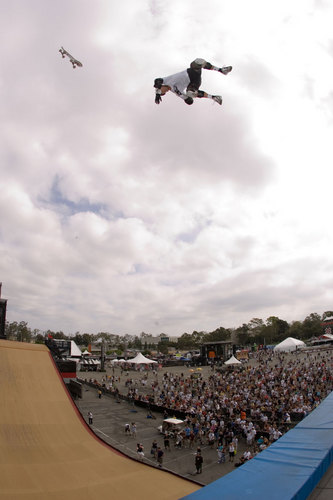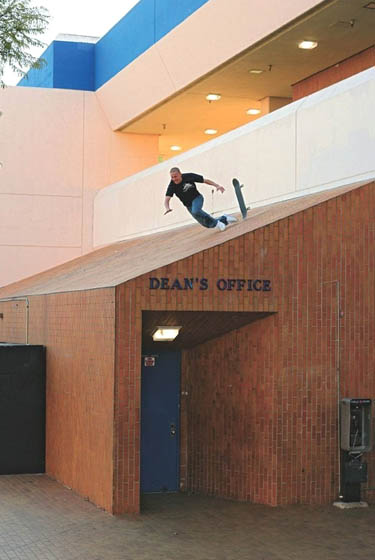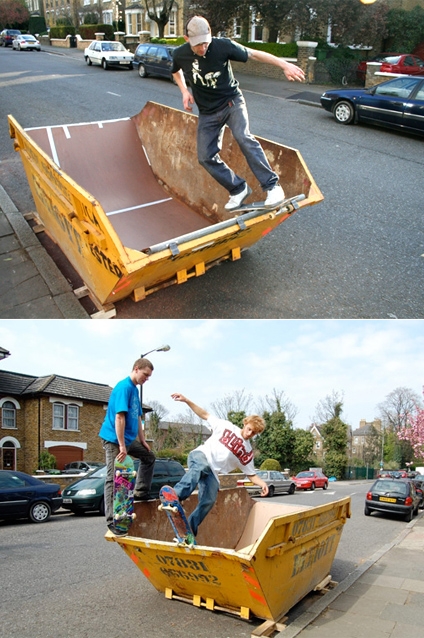The City of Melbourne undertakes a comprehensive safe skate program that aims to raise awareness of personal safety, injury prevention and the benefits of using protective equipment amongst skaters. The project also challenges current attitudes about protective equipment and encourage skaters of all ages to always use protective equipment. The project achieves these outcomes through effective communication with skaters, reinforcing the message by drawing on peer educators from within the skating community. In 2006, the City of Melbourne will continue to promote SkateSafe through the provision and promotion of free safe skate lessons during school holidays and the promotion of safe skate routes to navigate and move through the City.
Monash University Accident Research Centre (MUARC) conducted a research project titled ‘Gear Up: Motivators and Barriers to Personal Protective Equipment (PPE) by Youth Skaters. They had some very valuable information. Their findings indicate that there are personal, socio-cultural and economic factors influencing the use or non-use of PPE.
Only 25% of skaters wear wrist guards. (Wrist injuries and head injuries are the most common)
Elbow pads and knee pads were only seen as acceptable when learning how to skate, when skating ‘Vert’ ramp and when protecting an already injured body part. PPE was otherwise seen as unnecessary precaution that is uncomfortable and a hindrance to performance.
Skaters also valued the challenge of skating, which intrinsically involved ‘pushing their limits’ (risk taking) and got intense satisfaction from ‘landing’ new tricks. While personal challenges were self-set and achieved, it was clear that social approval for mastery was also valued.
Referenced from – City of Melbourne -Application to the World Health Organisation for Re-designation as a Safe Community
October 2006
This information is a few years old but still very relevant.

Vert Ramp skateboarding with pads
This is a professional skateboarder who is bailing from a trick. Ramp skaters always wear elbow and knee pads because of frequent falls at extreme heights. Although it looks uncontrolled he would have slid down the ramps transition on his knees with relative ease.

Street Skating
Now this guy is skating on the Dean’s Office of some university. He needs a helmet…or some grass to fall on. I’m pretty sure he is a professional skateboarder. And if he can walk after this fall them I can guarantee he got up and tried it again. You can’t stop people from trying to skate these massive obstacles the same way it is impossible to make protective pads compulsory to wear (and actually enforce it). It’s better to guide amateur skaters toward safer street skating locations rather than have them try tricks that are too extreme.
These are the locations that Skate Safe And Melbourne city council have declared unsafe to skate.
Unsafe zones in the city are:
- Bourke Street Mall (7am to 7pm);
- Little Collins Street (7am to 7pm);
- Swanston Street, western footpath (7am to 7pm);
- Little Bourke Street (24 hours); and
- Federation Square (24 hours).
Sensitive sites unsuitable for skating
- Lincoln Square (memorial to victims of the Bali bombings);
- Argyle Square Piazza marble;
- State Library steps and footpath sculpture;
- Treasury Buildings and Gordon Reserve including Parliament Station entrance;
- Little Lonsdale Street between Exhibition and Russell streets (9pm to 7am);
- Eureka Tower forecourt;
- Freshwater Place plaza and park;
- North Bank – corner of William and Flinders streets
- Melbourne Town Hall steps
- Flinders Lane between Swanston and Russell streets
- New Quay Promenade, Docklands;
- The Hub, Docklands;
- Telstra Dome concourse and access points (including La Trobe Street crossover and Bendigo Bank forecourt); and
- Bourke Street walkway and bridge, Docklands.
This is a map of the CBD showing the safe and unsafe zones for skating.

Melbourne CBD Map of Unsafe skate zones
I know this image is a bit small I will put it up on issuu for a closer look. The red areas are the sensitive sites and the Blue is the ‘Unsafe zones’. The green square points to the Riverslide skate park. I don’t know what the other little green spots are but I think they are indicating the Safe areas and train stations. Is this a joke?! They may be safe, but they certainly aren’t skate areas. Melbourne central is an indoor shopping centre and flinders street is a busy train station. You cant actually skate these places. Birrarung Mar and Flagstaff gardens also have green dots. These are parks with grass and trees. The footpaths are bare and there is nothing of interest to make people want to skate at these locations. This is why I would like to propose the idea of urban design in these areas to entice skaters to visit these Skate Safe Zones. Particulalry these park areas becuase there are fewer people walking. This product may be in the form of public seating that can be sat on by pedestrians and skated on by skateboarders.
This map is from http://www.melbourne.vic.gov.au/info.cfm?top=43&pa=659&pg=660
I will be skating around the city taking photos of these proposed Safe skate areas and will make my own map of the CBD.











